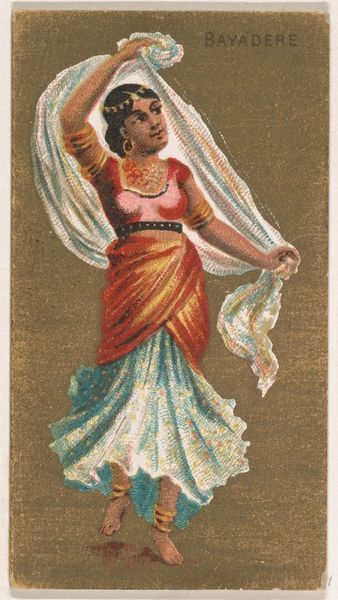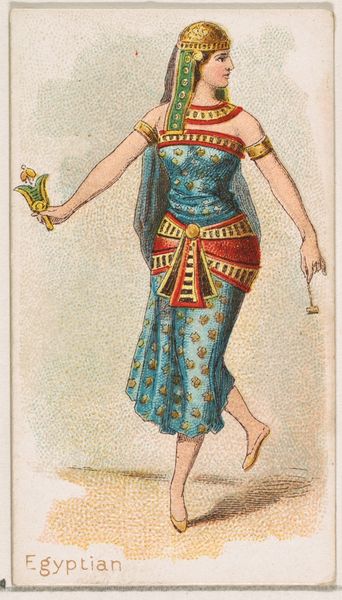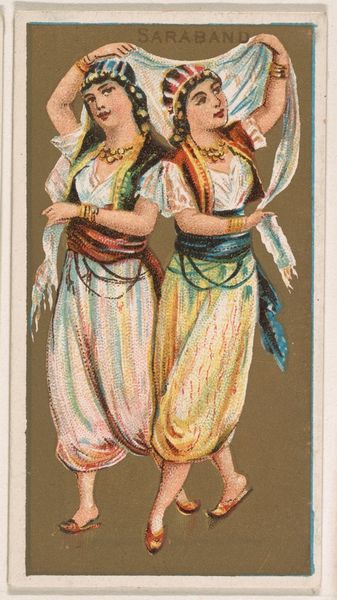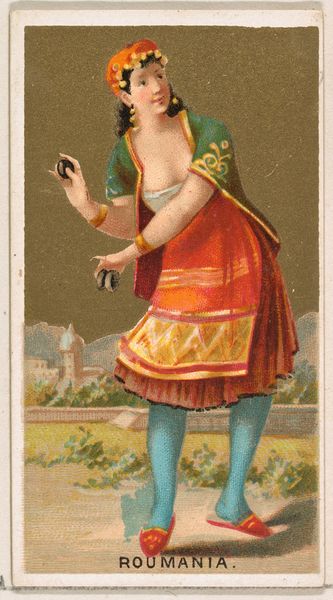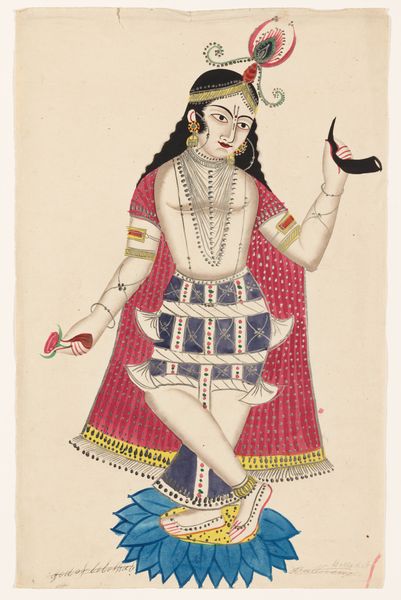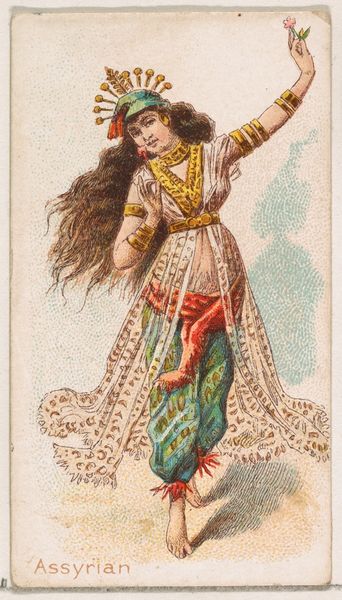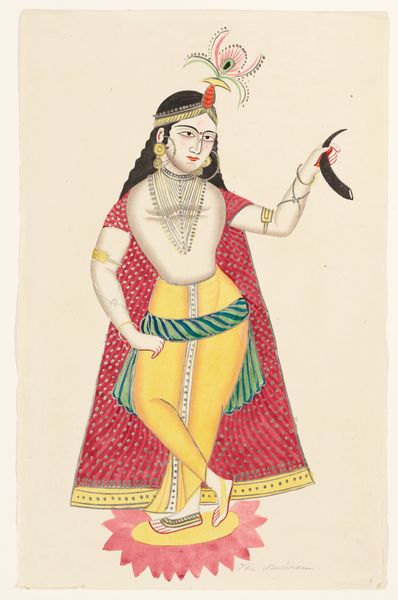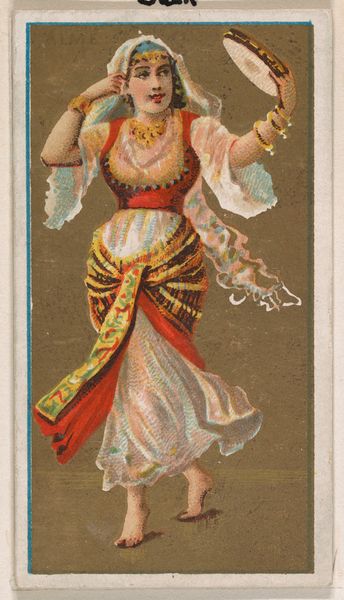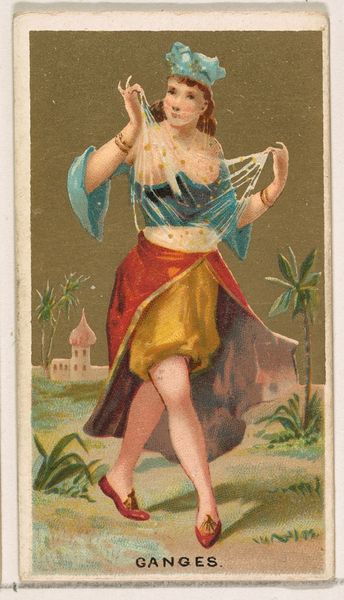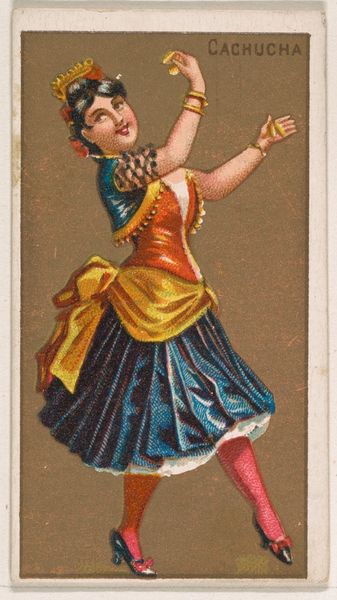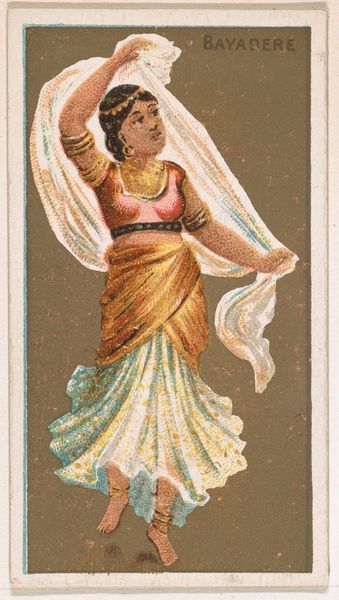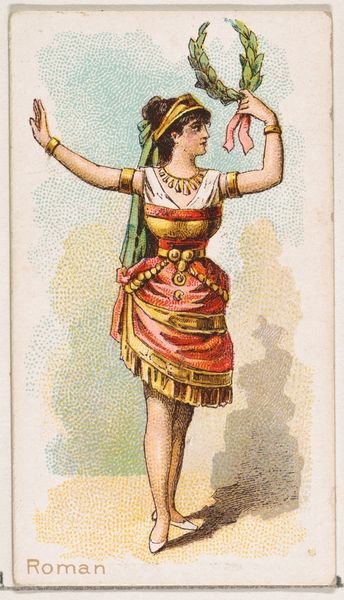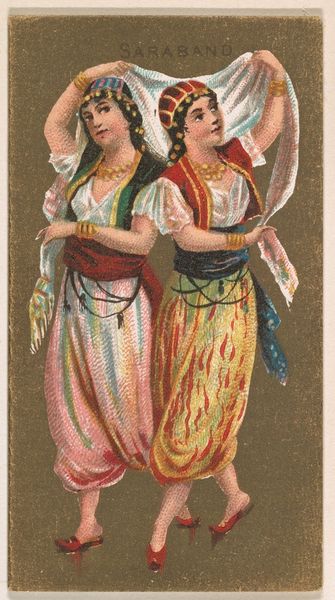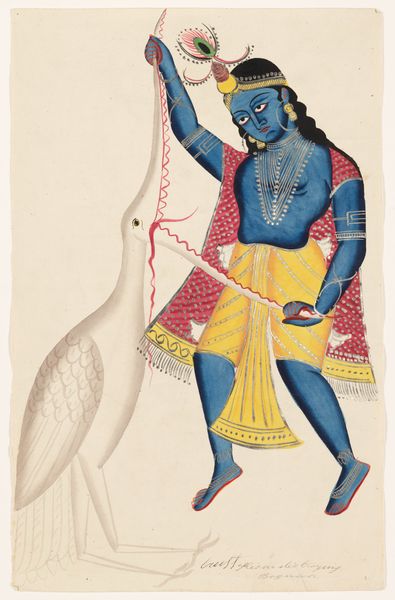
painting, watercolor
#
portrait
#
painting
#
asian-art
#
caricature
#
figuration
#
watercolor
#
watercolour illustration
#
genre-painting
#
decorative-art
#
miniature
Dimensions: 17 5/8 x 11 5/16 in. (44.8 x 28.7 cm)
Copyright: Public Domain
Curator: I'm immediately struck by the boldness of this watercolor. The jewel tones practically vibrate off the surface! Editor: Indeed! What we have here is an Indian painting from the 19th century, titled "Two Female Deities." It resides here at the Minneapolis Institute of Art, offering us a glimpse into artistic practices and social structures of the time. Curator: Female deities… I see them perched atop these stylized lotus flowers, one in red and the other in blue. The lotus is a powerful symbol of purity and enlightenment, wouldn't you agree? Editor: Precisely. The lotus iconography speaks volumes. Its roots in muddy waters but its blossom reaching for the sun makes it such a potent metaphor across many traditions. Notice the details, like the golden hue of their skin and those rather elaborate crowns. These wouldn't have been random. Curator: Absolutely, I feel the need to dig deeper here, wouldn't those aspects imply status, divinity? And yet, the presentation, the almost caricature-like quality of the faces—what do we make of that stylistic choice? Was it simply the artistic convention of the time or did it imply more than simple portrayal? Editor: This perhaps reflects the context of production. These images were, in many cases, produced within specific workshops and patronized by elites or colonial administrators. It might not just be about what’s portrayed, but for whom and under what circumstances. The stylized look perhaps was both aesthetic and an element in affirming certain power structures, both local and colonial. Curator: That is an interesting insight. I did get a hint of caricature that unsettled me, along with the immediate attractiveness. Considering those details, you're absolutely right—it all becomes so much more intriguing, loaded even, when we think about who was commissioning, who was consuming such imagery back then. Editor: These paintings allow a multilayered reading of their time. They show how art wasn't simply representational but participatory, contributing to power dynamics within both Indian society and during the colonial encounter. Curator: Such beautiful colours too! Well, considering those social-historical aspects it leaves me even more intrigued by these divine figures, rendered with such complexity. Editor: I find that their presence serves as a testament to art's enduring role as a mirror and maker of our intertwined histories and evolving perceptions of faith and authority.
Comments
No comments
Be the first to comment and join the conversation on the ultimate creative platform.
